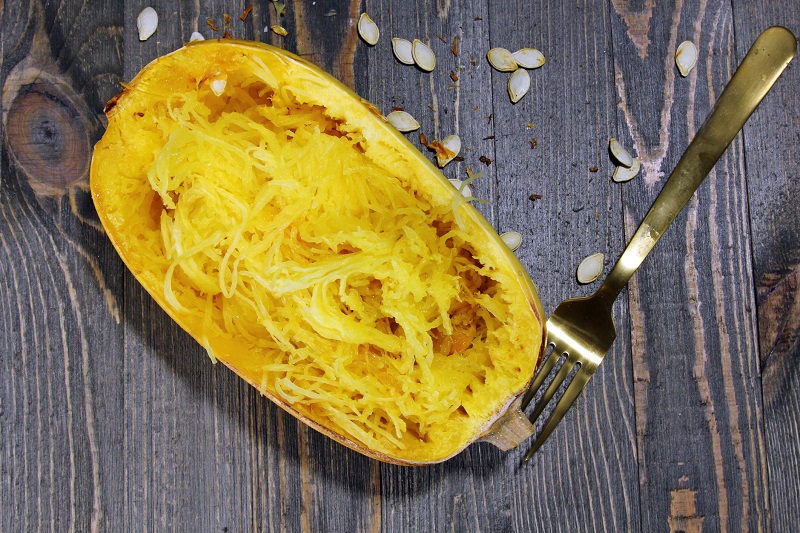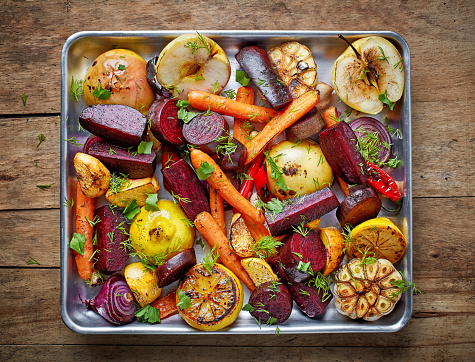Grocery Add-Ins: What are Non-Starchy Vegetables?
Article posted in: Club AdvantageIn addition to delicious, portion-controlled foods that are easy to prepare and delivered straight to your door, Nutrisystem plans round out your nutrition with four or more servings of non-starchy veggies per day. You know that vegetables are good for you, but what makes one “starchy” versus “non-starchy”? We’ll fill you in on all of the info!
Starchy Vegetables Have More Carbs
That’s because starch is a source of carbohydrates. When whole grains are refined into white flour, the wheat’s shell (bran) and a part called the “germ” are removed. What’s left behind is the endosperm, which is made of starch, according to the American Diabetes Association.
Starchy vegetables have this carb, too, meaning they can raise your blood glucose levels slightly. These vegetables, like potatoes, peas, butternut squash and corn, still have vitamins, minerals, antioxidants and lots of other nutrition your body needs—so just because they’re a “carb,” doesn’t mean they’re the same as eating a slice of cake.
But starchy vegetables have more calories than you might expect and are higher on the glycemic index, causing more of a shift in blood sugar than other vegetables. So they’re limited on the Nutrisystem program as “SmartCarbs.”
Haven’t started on Nutrisystem yet? Get started with a weight loss plan today!
What’s a SmartCarb?
Unlike fast-digesting carbs like sugar, SmartCarbs contain fiber and are rich in nutrients, so they fuel your body and digest more slowly. That slower digestion means you stay feeling full longer with SmartCarbs than with simple carbs, thanks to the fiber contained inside.
Eating fiber can also help you burn off stubborn belly fat. According to ScienceDaily, one study conducted at Wake Forest Baptist Medical Center found, “for every 10-gram increase in soluble fiber eaten per day, visceral fat was reduced by 3.7 percent over five years.”
SmartCarbs typically contain 80 to 120 calories per serving and are low to medium on the glycemic index, meaning the blood sugar jolt they provide isn’t too extreme. And they’re controlled: Depending on your gender and Nutrisystem plan, you’ll get a specific number of SmartCarb servings per day in addition to your Nutrisystem meals and snacks.
Most starchy vegetables are included in this group, and they’re listed with the amounts that make up a SmartCarb serving in the Nutrisystem Grocery Guide.
Non-Starchy Veggies Are Unlimited
Non-starchy veggies are lower in carbohydrates than their starchy cousins but still have filling fiber, vitamins and minerals, and they are often high in water content. Participants in a study of water-rich foods, which was conducted at Penn State, found they could decrease their calorie intake without reducing their overall meal portion size —so they could eat a similar volume of food but still lose weight. You’re encouraged to eat four servings or more of non-starchy veggies for a reason: Thanks to the fiber and water, these vegetables fill you up without providing many calories.
Because they’re so low in calories, non-starchy veggies are unlimited on Nutrisystem when eaten raw or cooked without added fat. On the Nutrisystem Grocery Guide, they’re listed under the “Vegetables” section and are perfect for when you want to eat something—or want to increase the overall volume of your meal—while staying on plan.
You don’t need to eat endless salads to get in your non-starchy vegetables! There are plenty of other delicious ways to get in your veggie servings. Try roasting tomatoes, onions and mushrooms. You can even use a low-sodium vegetable juice!
If you choose canned or frozen non-starchy vegetables, check the label: Canned veggies can be really high in sodium, so opt for low-sodium versions. Frozen vegetables can sometimes be packaged with rich, fatty sauces that will make them count as a SmartCarb or PowerFuel. But flash-frozen vegetables without salt or fat added are unlimited foods, just like their fresh counterparts.
Eating four or more servings will help fill you up and keep your body healthy, and it could also give you a healthy glow: In 2012, Scottish scientists found that eating more vegetables helped make skin look healthier and take on a more “attractive” hue in just six weeks, according to a study published in PLOS Journals. So you’ll feel and look healthier.
5 Non-Starchy Veggies and Healthy Recipes
1. Spinach

Amount per serving: 1 cup raw or ½ cup cooked
Calories per raw serving: 7
Bonus benefit: Muscle! Popeye wasn’t kidding: Spinach has one gram of muscle-building, gut-filling protein for every seven calories you eat. Compare that to an egg: An extra-large provides seven grams of protein, but is 80 calories—24 more than you’ll need to get seven grams from the leafy greens.
Try this delicious smoothie recipe to get in your servings of spinach >
2. Kale

Amount per serving: 1 cup raw or ½ cup cooked
Calories per raw serving: 8
Bonus benefit: More Vitamin A than a carrot. One cup of chopped kale leaves provides 206 percent of your recommended daily Vitamin A, as well as 130 percent of your daily Vitamin C!
For a crunchy, salty, satisfying snack, try this easy recipe for poppable kale chips >
3. Spaghetti Squash

Amount per serving: 1 cup raw or ½ cup cooked
Calories per raw serving: 30
Bonus benefit: It’s pasta consistency without the calories: In about 45 minutes in the oven, spaghetti squash takes on a perfect, spaghetti-like consistency that’s great for adding volume to your Nutrisystem pasta dishes or as a low-calorie side for any meal.
Try this classic pasta dish with a spaghetti squash twist >
4. Cauliflower

Amount per serving: 1 cup raw or ½ cup cooked
Calories per boiled serving: 14
Bonus benefit: Rice lovers, rejoice! With a grater or food processor, cauliflower can be chopped into small pieces that get fluffy and make a delicious substitute for rice—and it cooks faster than the traditional grain.
Try this delicious take on the ultimate comfort food, mac and cheese >
5. Broccoli

Amount per serving: 1 cup raw or ½ cup cooked
Calories per raw serving: 8
Bonus benefit: Strong bones AND muscles: Not only does broccoli have 2.5 grams of muscle-building protein for every cup you eat, it’s also got 43 milligrams of calcium in that serving—both of those are better than you’ll get from two percent milk.
Create a simple and flavorful side dish to get in your nutrient-packed broccoli servings >
*All nutritional information taken from United States Department of Agriculture.










